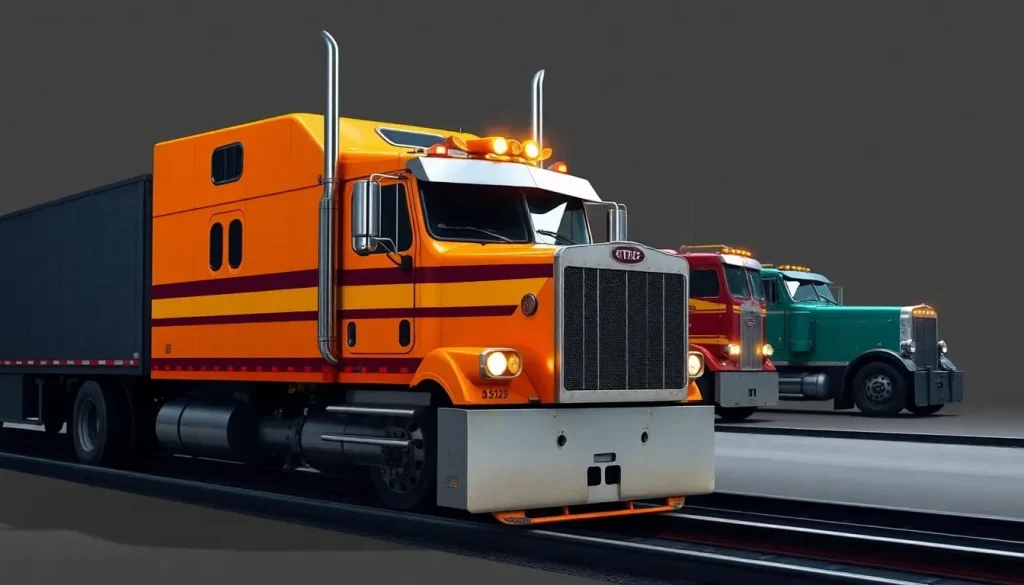ACT Research shows faster capacity contraction as Class 8 production falls 35%

The heavy-duty trucking industry is witnessing a significant period of contraction, driven by a complex interplay of demand, production, and operational constraints. Understanding these dynamics is essential for stakeholders looking to navigate the challenges and opportunities in this evolving landscape.
In a recent report from ACT Research, the state of the freight market has been analyzed, revealing critical insights into production rates and future forecasts. This information is paramount for fleet managers, logistics companies, and industry analysts alike.
Heavy-duty production decline: An alarming trend
According to Tim Denoyer, vice president and senior analyst at ACT Research, “Class 8 tractor production is on track to decline about 35% from the first half to the second half of this year.” This drop equates to several thousand fewer trucks being produced each month, falling significantly below the figures necessary to maintain the current fleet size.
This substantial decrease in production is concerning, particularly in a sector that is already grappling with various challenges. Denoyer further mentioned that this tightening of capacity, despite a relatively stable demand environment, could lead to an increase in for-hire demand. This potential shift may reverse the trend of insourcing that has characterized the industry in recent years, although such changes are expected to take time.
Understanding driver and equipment constraints
The trucking industry is facing multifaceted constraints, particularly regarding driver availability and equipment capacity. Denoyer noted that the findings from the ACT Driver Availability Index indicate that the driver market, while not currently tight, is far from loose. “This index, derived from surveys of medium and large fleets, needed to fall below 40 in the last two cycles before rates responded,” he explained.
Several factors are poised to tighten driver capacity in the coming years:
- New regulations regarding nondomiciled drivers
- Rising operational costs, including heavy truck tariffs
- Increased competition for skilled drivers
As driver shortages become more pronounced, coupled with rising equipment costs, trucking companies may find themselves facing significant operational challenges.
Freight forecast details: An essential resource
The ACT Freight Forecast, a comprehensive 61-page monthly report, provides valuable analysis and predictions for a variety of U.S. freight metrics. This report is a crucial resource for understanding market dynamics, as it includes data from significant sources such as:
- The Cass Freight Index
- The Cass Truckload Linehaul Index
- DAT spot and contract rates for the U.S. and Canada
ACT Research’s forecasts span across several vital markets, including:
- Truckload (TL)
- Less-than-truckload (LTL)
- Intermodal markets
These insights cover not only monthly and quarterly predictions but also annual outlooks extending two to three years into the future. Critical components of this analysis include expected changes in capacity, volumes, and rates, all of which are essential for making informed fleet planning and equipment investment decisions.
Market challenges and opportunities
The trucking industry is at a crossroads, faced with a mix of challenges and potential opportunities. While the decline in production poses risks, it may also catalyze a market correction that could benefit those willing to adapt. Key challenges include:
- Increased operational costs due to tariffs and regulations
- Driver shortages impacting capacity
- Uncertainty in market demand forecasts
Conversely, opportunities may arise from:
- Innovations in logistics and supply chain management
- Adoption of technology to optimize fleet operations
- Potential increases in for-hire demand as insourcing trends reverse
Understanding these dynamics is crucial for fleet operators looking to position themselves strategically in an evolving market environment.
Looking ahead: The trucking industry forecast for 2025
As we anticipate the future of the trucking industry, the projections for 2025 offer both caution and hope. The ongoing capacity contraction and production decline may continue to shape market conditions. However, as the industry adjusts to these changes, new opportunities for growth and efficiency may emerge.
Factors influencing the trucking landscape include:
- The economic recovery post-pandemic
- Changes in consumer demand patterns
- Technological advancements in fleet management
As we prepare for these shifts, stakeholders must remain vigilant and adaptable, ensuring that their operations align with market trends and consumer needs.
Insights from ACT Research: A valuable resource
For those seeking to delve deeper into the complexities of the freight market, the Freight Forecast: Rate and Volume OUTLOOK report by ACT Research is an invaluable tool. This resource equips industry professionals with the knowledge required to navigate the challenges of the trucking industry effectively.
In addition, the ACT Research Blog provides regular updates and insights that can help stakeholders stay informed about market trends and developments. By leveraging these resources, companies can make better strategic decisions and optimize their operations.
For a visual perspective on these trends, consider watching this insightful video:




Leave a Reply